Horses have captivated human beings for centuries, not only because of their strength and elegance but also because of the fascinating variety in their coat patterns. These patterns are a visual treat and can tell us a lot about the horse’s genetics and sometimes their place in history. This article explores 15 unique horse coat patterns, shedding light on their defining features, historical significance, and genetic origins.
Understanding Horse Coat Genetics
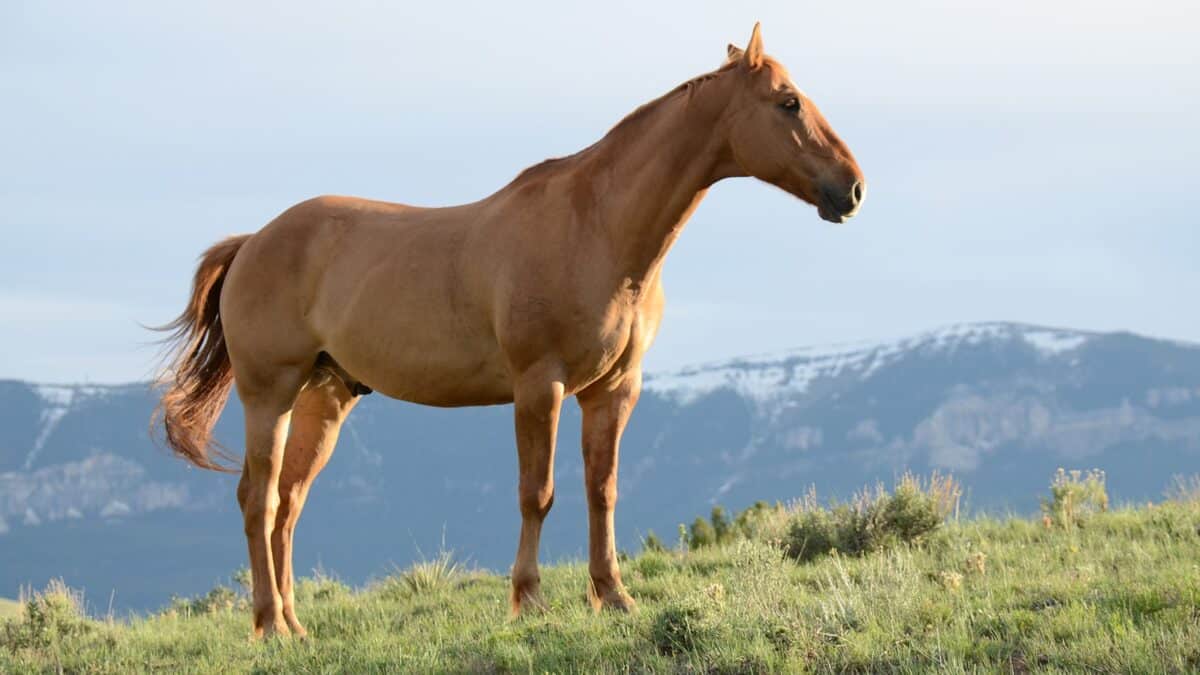
Before delving into specific patterns, it’s essential to understand the basic genetics that influence a horse’s coat. Horse coat colors and patterns result from the interaction between various genes. The base colors include black, chestnut, and bay, and these are modified by dilution genes and pattern genes to create the diverse tapestries we see on horses today.
Classic Bay

The bay coat is one of the most common horse colors, characterized by a reddish-brown body with a black mane, tail, and legs. Its classic and elegant appearance is favored in many horse breeds. This pattern speaks of a harmonious blend of the extension gene (red pigment) and the agouti gene (which affects the distribution of black pigment).
Charming Chestnut

Chestnut horses have a rich, reddish-brown coat and can vary from light golden tones to deep, dark shades. This coat is solid with no black hues, and its genetic simplicity (controlled by the red base color) makes it a common yet beloved pattern among horse enthusiasts.
Bold Black

Black horses boast a striking appearance with a pure black coat, mane, and tail. The solid ebony color is due to the dominant extension gene. While seemingly straightforward, truly black horses are somewhat rare because many perceived black horses are actually very dark bays.
Striking Gray

Gray horses present a unique evolution of color. They are born with another solid color (like black or bay) and gradually turn gray as they age. This transformative pattern is fascinating, and its distinctive fading attribute is influenced by a dominant gray gene.
Alluring Appaloosa
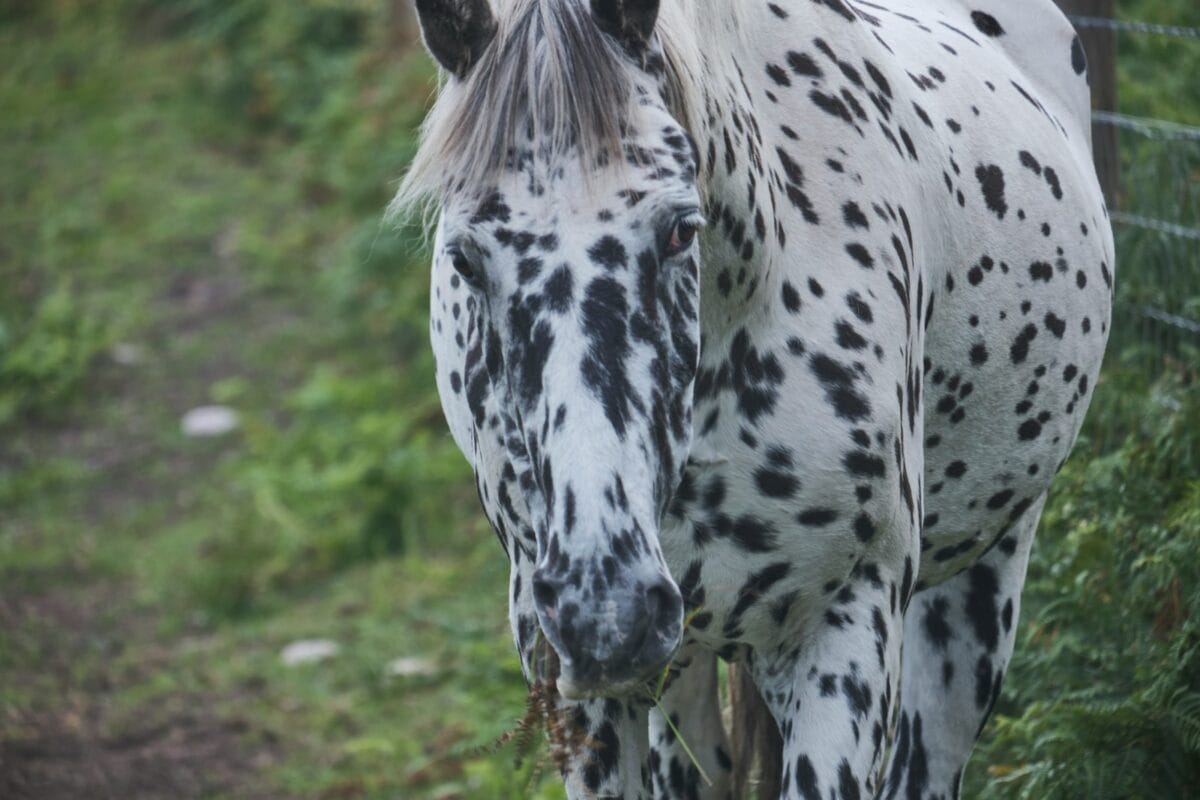
The appaloosa pattern is among the most eye-catching, with its distinctive spots and mottled skin. Known for its historical ties to the Nez Perce tribe, this pattern includes several variations such as leopard, blanket, and snowflake. The evident spots and complex patterns are regulated by the Leopard Complex gene.
Eloquent Tobiano
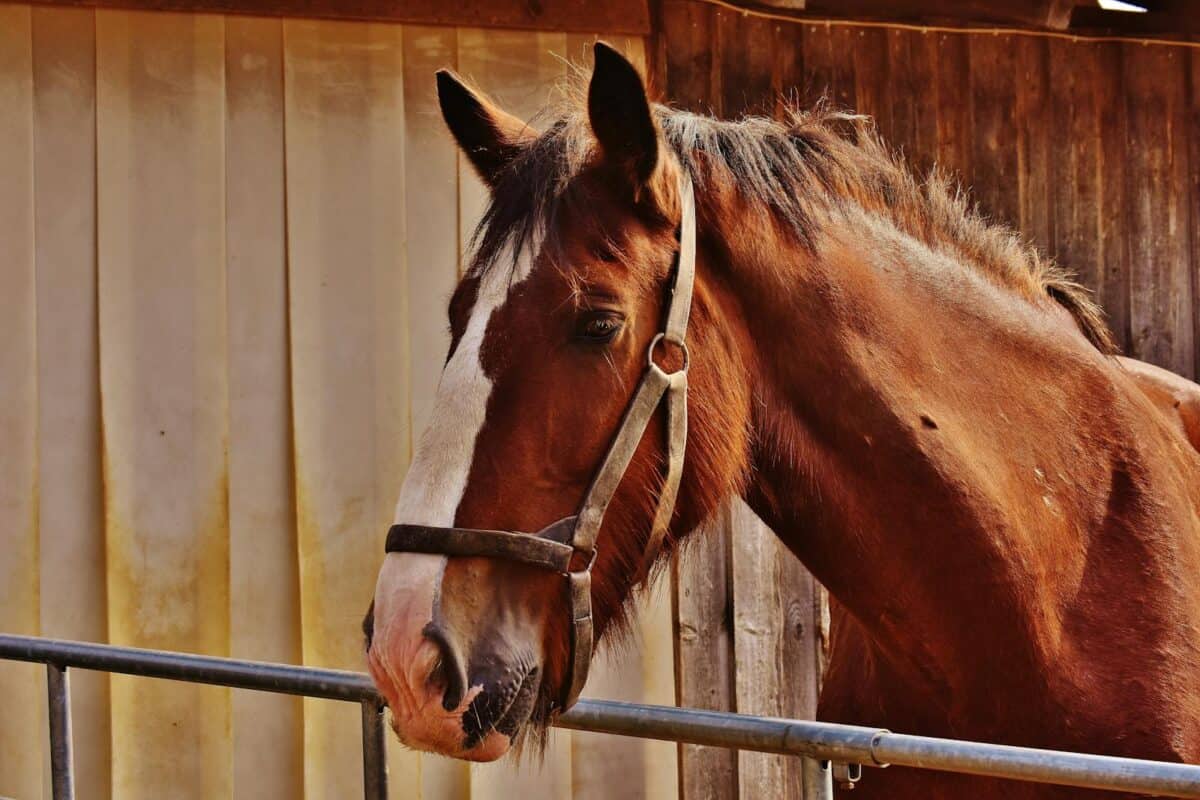
The Tobiano coat pattern features large, smooth white patches on an otherwise dark coat. This pattern creates a striking appearance, often with white legs and a dark head. The Tobiano gene is dominant and easily identified, making this pattern a favorite among paint horse enthusiasts.
Intriguing Overo

Overo patterns are irregular and often appear to be splashed or scattered over a horse’s base color. With striking white patterns typically appearing on the horse’s sides, Overo horses present a captivating look. The genetics are complex, involving several different genes that create this unique pattern.
Dazzling Dun
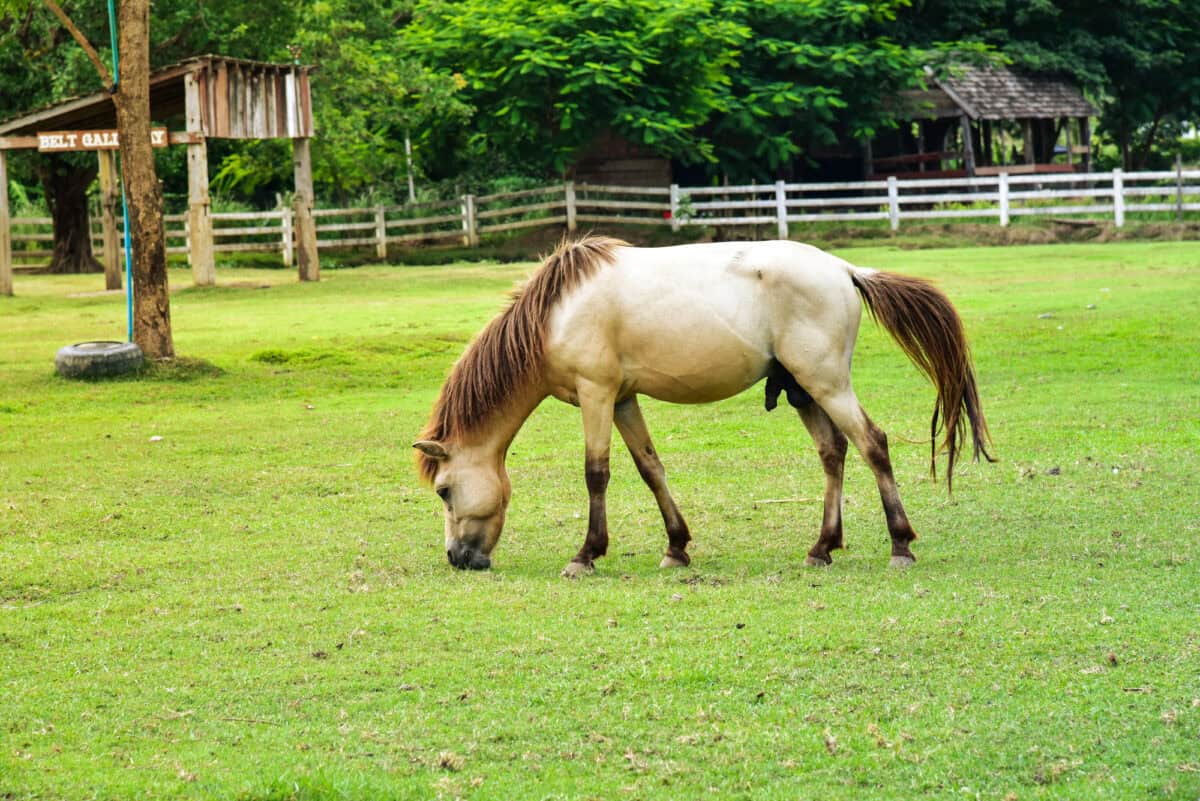
Dun horses offer another fascinating coat with a lightened body color and distinctive primitive markings like a dorsal stripe, shoulder stripes, or leg barring. This pattern harks back to ancient wild horses and is governed by the dun dilution gene, resulting in impressive camouflage features.
Mystifying Grulla (or Blue Dun)

The Grulla, or blue dun, displays a smoky gray coat that looks almost blue, often complemented by primitive dun markings. This pattern results from a black base coat diluted by the dun gene, showcasing a muted, intriguing palette that hints at elegance and mystery.
Enchanting Palomino
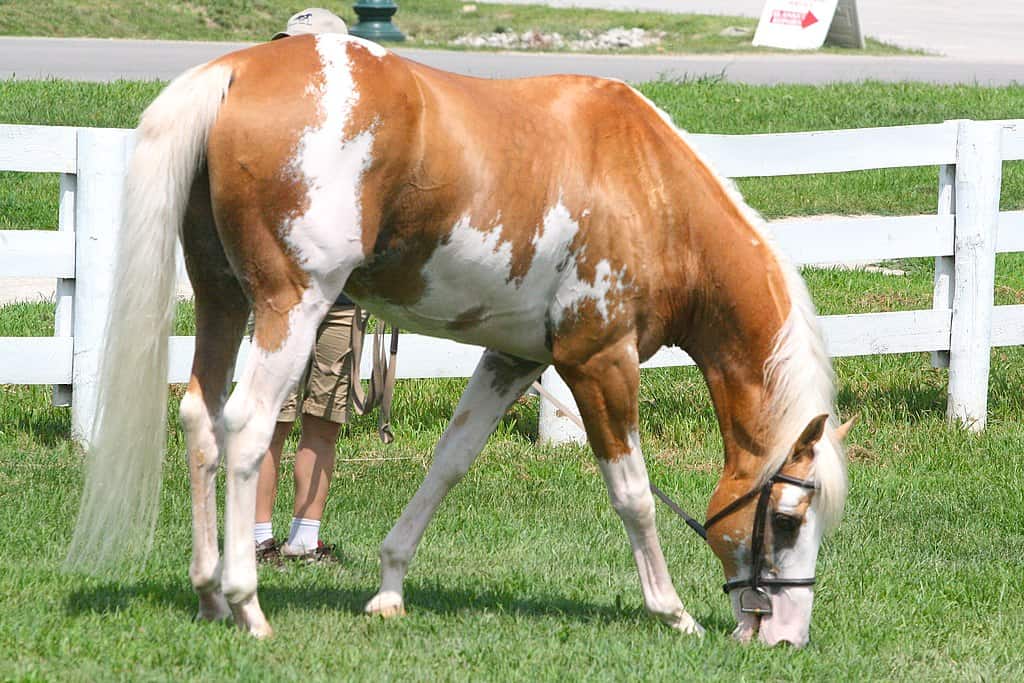
Palomino horses capture attention with their golden coats and white manes and tails. This shimmering effect arises from a single cream dilution of the chestnut coat. Palominos are often celebrated in literature and folklore for their golden beauty.
Regal Roan

Roan horses exhibit a delicate mixture of white and colored hairs, creating a unique roan pattern over their bodies while the head and legs retain their base color. The roan pattern genes interact with various base colors, resulting in fascinating combinations such as blue roan, red roan, and bay roan.
Glorious Buckskin
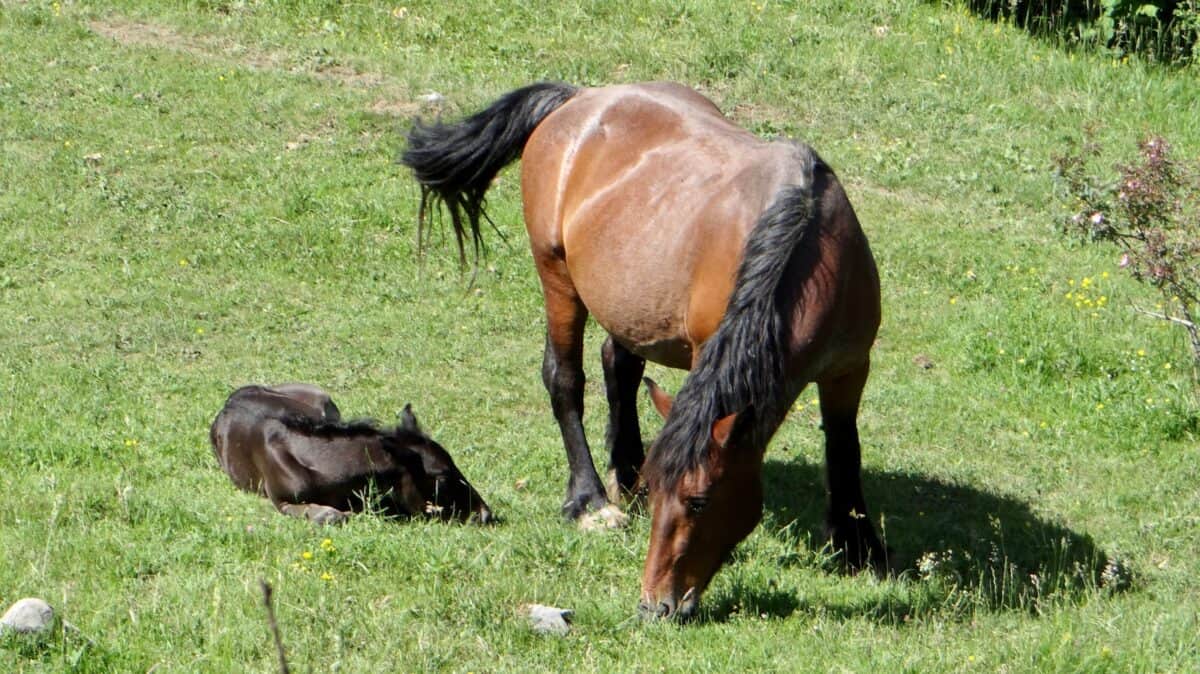
A buckskin coat exhibits a light, yellowish body with black points. This appearance demands comparison to a well-worn buckskin, making it easy to remember and identify. This pattern results from a bay base coat diluted by the cream gene, contributing to its warm, earthy tones and elegant presence.
Summary
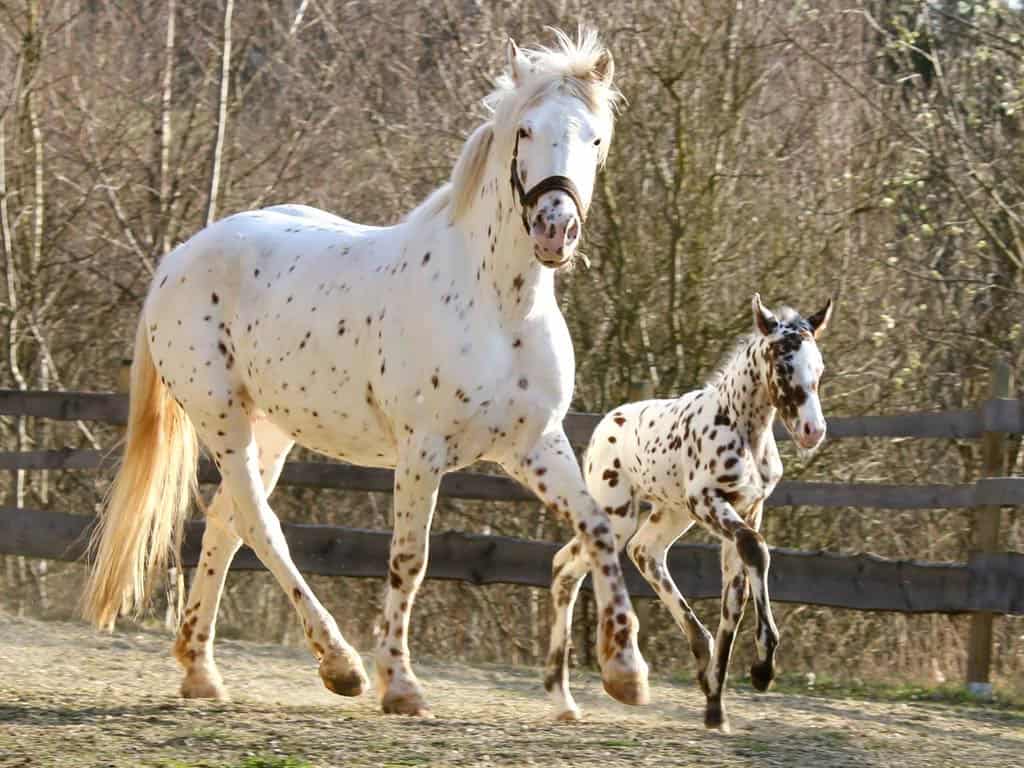
The world of horse coat patterns is a kaleidoscope of colors and designs, each with its own story and genetic background. From the contrasting patches of the paint horses to the subtle elegance of the dun, these unique patterns tell us so much about a horse’s lineage and the wonders of nature’s artistry. Understanding these patterns adds another layer of appreciation for these majestic animals and highlights the beauty and complexity crafted by genetics and evolution. As you explore the vibrant world of equine coats, may you find deeper connections to these magnificent creatures and their storied histories.
- 15 Amazing Feats of Memory in the Animal Kingdom - August 14, 2025
- The Strange Truth Behind America Sudden Rise in Shark Attacks - August 14, 2025
- 12 US States Where Wolves Are Making a Comeback - August 13, 2025

